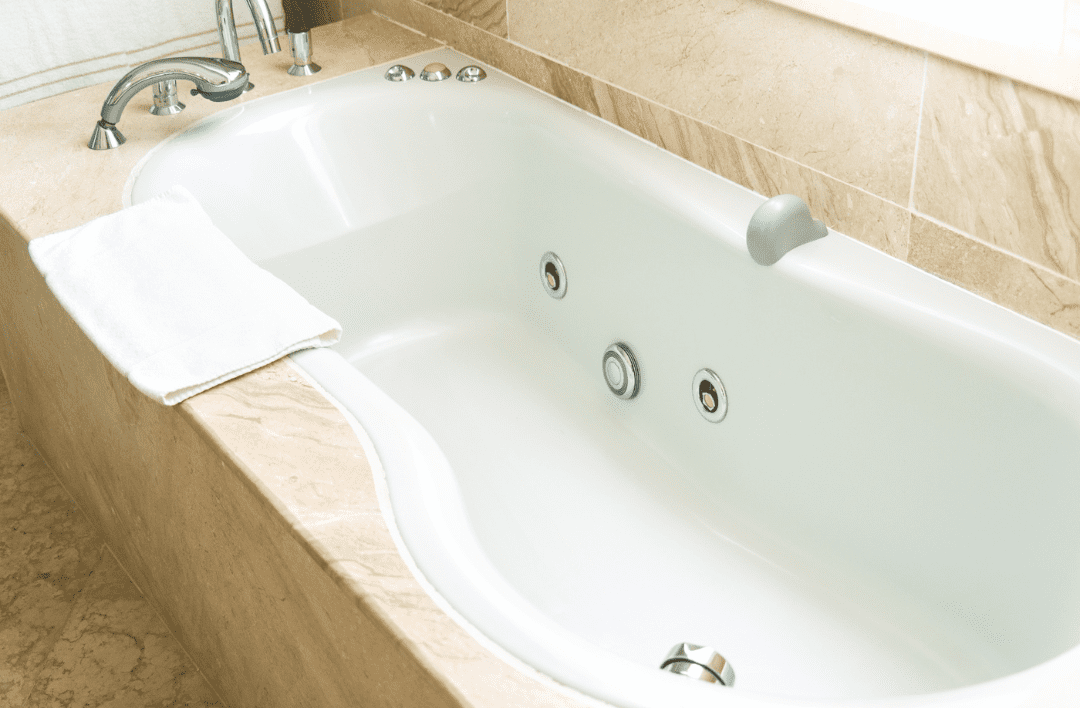Fiberglass bathtubs & showers are a popular choice due to their affordability, lightweight nature, and ease of installation. However, like any home fixture, they require proper care and maintenance to ensure they remain in good condition over the years. With the right maintenance practices, you can significantly extend the lifespan of your fiberglass bathtub or shower, keeping it looking and functioning like new for decades. In this comprehensive article, we’ll explore practical tips and tricks to help you extend your fiberglass bathtub or shower’s life and prevent common issues such as discoloration, scratches, chips, and cracks.
1. Regular Cleaning: The Foundation of Long-Term Care
Why Regular Cleaning Matters
One of the most effective ways to extend the lifespan of your fiberglass bathtub is through regular cleaning. Over time, soap scum, mineral deposits, and grime can build up on the surface of your tub, leading to discoloration and dullness. If left unchecked, these substances can weaken the fiberglass, making it more susceptible to damage.
How to Clean Your Fiberglass Bathtub
Use Mild Cleaners: Always use non-abrasive, mild cleaners when cleaning your fiberglass bathtub. Harsh chemicals and abrasive scrubbers can scratch the surface and wear down the protective finish, leading to damage over time. Opt for gentle cleaners like dish soap, white vinegar, or even a specialized fiberglass cleaner.
Weekly Cleaning Routine: Establish a weekly cleaning routine to prevent the buildup of soap scum and mineral deposits. Mix a solution of warm water and a few drops of dish soap, and use a soft sponge or cloth to wipe down the entire surface of the tub. Rinse thoroughly with warm water to remove any soap residue.
Deep Clean Monthly: Once a month, give your tub a deep clean using a mixture of baking soda and water or even white vinegar. Create a paste, apply it to the surface of the tub, and let it sit for 15-20 minutes. Scrub gently with a soft brush, then rinse thoroughly. This will help remove any stubborn stains and restore the shine to your fiberglass tub.
2. Preventing Scratches and Surface Damage
Understanding the Vulnerability of Fiberglass
Fiberglass is a durable material, but it is also prone to scratches and surface wear if not properly cared for. These scratches can not only detract from the appearance of your bathtub but also create areas where dirt and grime can accumulate, making cleaning more difficult.
Tips for Preventing Scratches
Avoid Abrasive Cleaners: As we mentioned earlier, always use non-abrasive cleaners and soft sponges or cloths when cleaning your tub. Avoid using scouring pads, steel wool, hard brushes or any other abrasive materials that can scratch the surface.
Place a Bath Mat: To protect the bottom of your bathtub from scratches, consider placing a cushioned bath mat in the tub. This will provide a layer of protection against heavy objects or sharp items that could potentially damage the fiberglass.
Handle Heavy Objects with Care: Be mindful when placing heavy objects in or near your bathtub. Dropping shampoo bottles, razors, or other heavy items can lead to chips or cracks in the fiberglass. Store these items securely in a shower caddy or shelf to prevent accidents.
Install Protective Pads: If your bathtub is used regularly, consider installing adhesive protective pads on the bottom. These pads can help distribute weight more evenly and reduce the risk of scratches or dents.
3. Addressing and Preventing Discoloration
Common Causes of Discoloration
Discoloration is a common issue with fiberglass bathtubs, often caused by hard water, soap scum buildup, and exposure to sunlight. These factors can cause the surface of the tub to become dull and yellowed, detracting from its appearance.
How to Prevent and Remove Discoloration
Wipe Down After Use: To prevent discoloration, make it a habit to wipe down your bathtub after each use. This will help remove any soap residue and water droplets that could lead to staining. Use a soft, dry cloth to wipe down the surface, paying special attention to areas where water tends to pool.
Use a Water Softener: If your home has hard water, consider installing a water softener. Hard water contains high levels of minerals like calcium and magnesium, which can leave behind deposits that cause discoloration. A water softener will reduce these minerals, helping to prevent stains.
Avoid Prolonged Sun Exposure: If your bathroom receives a lot of natural sunlight, try to minimize direct exposure to your bathtub. Prolonged exposure to sunlight can cause the fiberglass to fade and discolor over time. Consider using window treatments or shades to block out the sun during peak hours.
Regular Deep Cleaning: As we mentioned earlier, regular deep cleaning with a baking soda paste or a commercial fiberglass cleaner can help remove any discoloration that has already occurred. Be sure to follow up with a thorough rinse to prevent any cleaner residue from causing further staining.
4. Preventing and Repairing Chips and Cracks
The Importance of Timely Repairs
Chips and cracks are more than just cosmetic issues; they can compromise the integrity of your fiberglass bathtub, leading to more extensive damage if not addressed promptly. Water can seep into cracks, causing them to expand and potentially leading to leaks, mold, or structural damage.
How to Prevent Chips and Cracks
Avoid Heavy Impact: As mentioned earlier, be cautious when handling heavy or sharp objects around your bathtub. Dropping items can cause chips or cracks, which can worsen over time. Install a shower caddy or shelf to keep items secure and reduce the risk of accidents.
Check for Early Signs of Damage: Regularly inspect your bathtub for early signs of damage, such as small chips or hairline cracks. Catching these issues early can prevent them from becoming more serious problems.
How to Repair Chips and Cracks
Use the Nu-Life Inlay System: For fiberglass cracks, we manufacture a permanent repair product to take care of the problem once and for all. Our high-quality, commercial-grade inlays are installed with our proprietary fusion adhesive to permanently bond the inlay to the bathtub or shower floor. For more information about the Nu-Life Inlay system, please contact us.
Consider Professional Repair for Major Damage: If you notice significant damage, it’s best to consult a professional refinishing company. Professional repair services can provide a more durable and seamless fix, ensuring the longevity of your bathtub. The Nu-Bath Refinishing Network is a group of professional refinishing companies we recommend to handle even the most complex repairs, using high-quality materials and techniques to restore your tub to its original condition. If you cannot find a company in your service area, please feel free to reach out and we will help point you in the right direction.
5. Maintaining the Finish and Shine
Preserving the Aesthetic Appeal of Your Tub
The finish of your fiberglass bathtub not only enhances its appearance but also protects the underlying material from damage. Over time, the finish can wear down, leading to a dull, faded look. To keep your bathtub looking shiny and new, it’s important to maintain the finish properly.
Tips for Maintaining the Finish
Avoid Harsh Chemicals: Harsh chemicals, such as bleach or ammonia, can strip the finish from your bathtub, leaving it vulnerable to damage. Stick to mild, non-abrasive cleaners to preserve the finish.
Polish the Surface: To maintain the shine of your fiberglass bathtub, consider polishing it every few months. Use a fiberglass polish or a specialized bathtub cleaner with polishing properties. Apply the polish with a soft cloth, buffing in a circular motion until the surface shines.
Refinish When Necessary: If your bathtub’s finish has worn down significantly, refinishing may be necessary. Refinishing involves applying a new coat of finish to the entire tub, restoring its original luster and providing a protective layer against damage. You can find a company from the Nu-Bath Refinishing Network to learn more and get a price quote.
6. Protecting Against Mold and Mildew
The Risks of Mold and Mildew
Mold and mildew are common issues in bathrooms due to the high humidity levels. These fungi can not only cause unsightly stains but also pose health risks and damage the fiberglass surface of your bathtub.
How to Prevent Mold and Mildew
Ensure Proper Ventilation: One of the best ways to prevent mold and mildew is to ensure your bathroom is properly ventilated. Use an exhaust fan during and after baths or showers to reduce humidity levels. If your bathroom doesn’t have a fan, consider installing one or opening a window to allow moisture to escape.
Wipe Down After Use: As with preventing discoloration, wiping down your bathtub after each use can help prevent mold and mildew. Pay special attention to the corners and edges of the tub, where water tends to accumulate.
Use Mold-Resistant Products: Consider using mold-resistant caulk around the edges of your bathtub to prevent mold growth in the seams. Additionally, regularly clean the tub with a mold-resistant cleaner to keep fungi at bay.
7. Regular Inspections: Catching Issues Early
The Importance of Routine Inspections
Regularly inspecting your fiberglass bathtub is key to maintaining its longevity. By catching issues early, you can address them before they become more serious, saving you time and money on repairs.
What to Look for During Inspections
Surface Wear and Scratches: Check the surface of your bathtub for signs of wear, such as scratches, dullness, or fading. These issues can indicate that the finish is wearing down and may need attention.
Discoloration and Stains: Look for any signs of discoloration, such as yellowing or staining, which could indicate the need for a deeper clean or refinishing.
Chips and Cracks: Inspect the entire surface of your bathtub for any chips, cracks, or other signs of damage. Pay special attention to the edges and bottom of the tub, where damage is most likely to occur.
Mold and Mildew: Check for any signs of mold or mildew growth, particularly in the corners and seams of the tub. If you notice any, clean the area immediately to prevent further growth.
If you need some help our guidance with your fiberglass bathtub or shower, please contact us today!


